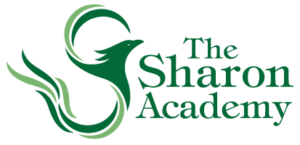About Personalized Proficiency at TSA
In This Section:
|
The mission of The Sharon Academy is to nurture intelligent, independent and creative thinking in a small school community, awakening students to their immense potential and the difference they can make in the world.
Proficiency and TSA’s 7 Gateway Standards
In order for students to succeed in the world outside of school, students need to be able to go beyond the content they learn in class. Employers and colleges are reporting that they are lacking applicants who are flexible, creative, active, engaged and thoughtful learners; problem solvers who are able to dig deeply and communicate effectively.
At TSA, students learn how to learn.
In a world where there is more and more information to be consumed, learning can no longer be measured solely by mastery of a set of content. There is simply too much to know. Students need a suite of well-practiced skills that allow them to apply their knowledge to problem solving through acquiring and synthesizing information, using imagination, persevering, and communicating. Along with learning content in their classes, students must be explicitly taught and evaluated on the skills they need in order to successfully transition to life after high school.
At TSA, we use a proficiency-based system for learning, teaching and assessment. TSA’s Proficiency program was designed and built from the ground up to give students the tools they need to learn how to learn, while teaching them transferable skills. Coupled with Deeper Learning, the Proficiency system at TSA prepares students for success in life after high school
At TSA, Proficiency means:
- Mastering skills and content: Students gain the skills that will make them leaders on college campuses, in the workplace, and as citizens.
- An emphasis on detailed feedback: Student work is assessed using rubrics and a “scale of mastery”. Each assignment has a rubric which tells students which of the transferable skills will be assessed in the assignment Student work is evaluated in relationship to meeting the standard set in the rubric for each skill: “Starting” to meet the standard, “Progressing”, “Meeting” or “Exceeding”. Each assignment may require students to use several different skills, receiving assessment on each of those skills separately. For instance, for a physics experiment, they will receive assessments on Standard 1(Acquire) for their experimental design and data collection. Standard 2 (Reason) will be assessed through their analysis and conclusions. Standard 4 (Communicate) will be assessed through the report the student completes. By giving such targeted and specific feedback on the individual components of a student’s learning, the proficiency-based system gives students more information about their progress. It helps them better understand where they are already proficient and where they need to focus more effort. Students also earn a letter grade which represents their overall achievement in a course.
- An emphasis on progress and growth: Armed with detailed information on their performance, students are asked to reflect on their learning by asking: “How am I progressing? What have I accomplished? What can I do to improve?” rather than, “What grade did I get?” Students and teachers can work on improving the specific goals which need support.
- Multiple opportunities: Students will have multiple opportunities within a single class to demonstrate mastery of a content standard and will have opportunities across many classes and school experiences (such as the annual All School Musical) to demonstrate mastery of transferable skills. Opportunities to revise work are frequently given.
- Offering support and appropriate challenge: Tracking student progress against clear standards means we can more readily identify when a student needs support to meet the standard, and also when a student can use additional challenges and encouragement to exceed the standard.
